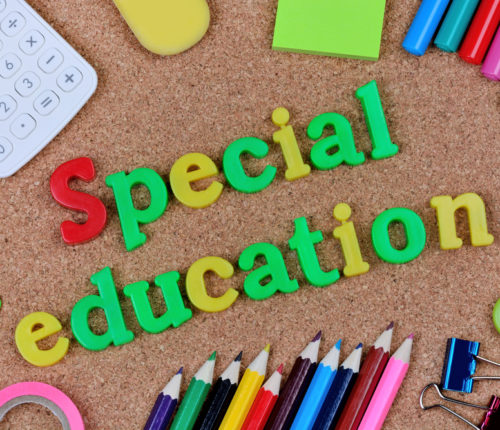
Kids with Cerebral Palsy: Education Options in Public Schools

Kids with cerebral palsy (CP), even a mild form, can have physical limitations that pose challenges in their day-to-day lives. Many kids with cerebral palsy also have other conditions that affect how well they learn. This often results in kids attending school through special education programs. Most of these programs are through local public schools and have a wide array of options for kids with special needs.
Special Education Programs for Kids with Cerebral Palsy
Public-funded special education programs are available in all 50 states, the District of Columbia and U.S. territories. These programs have operated since the late 1960’s. Federal laws, including the Americans with Disabilities Act (ADA) and the Individuals with Disabilities Education Act (IDEA), ensure that children with disabilities receive a free education that fits their individual needs.
Although each public school district adjusts its special education department to meet its own local standards and budgets, kids with cerebral palsy are entitled to participate in educational programs from age three until they either graduate from high school or reach their 21st birthday.
Special education rules are in Part B of the IDEA 2004 law. Per the U.S. Department of Education, preschool children under the age of three are eligible for special education programs under IDEA 2004 Part C.
When Does Education Start?
Generally, special education programs for disabled children begin at the preschool level, usually during the toddler years. Most special education teachers prefer to start the process of getting kids with cerebral palsy ready to enter the school system at an earlier age than non-disabled kids. This helps them have time to get used to being in a classroom environment with their peers. Additionally, this gives teachers and administrators time to figure out how to meet the needs of each child and to identify possible learning disabilities or behavioral issues.
Programs for Kids with Cerebral Palsy and Special Needs
Special education programs have had the same basic goals even before the ADA and IDEA laws were passed – to give kids with disabilities access to free education and skills they will need to lead normal and independent lives. In order to meet these goals, special education departments have a wide array of options and programs.
Mainstreaming
This option is for kids with cerebral palsy and other physical disabilities who can participate in regular classes with regular education students. In some cases, younger students start school in a special education class and are “mainstreamed” once teachers determine that they can handle the stress and demands of regular classes.
In other cases, mainstreaming occurs sooner with the guidance of a teacher or paraprofessional. However, in most cases, special education students also receive individual physical and occupational therapy even if mainstreaming is successful.
Special Education Classrooms for Severe Issues
This option is available for children with more severe disabilities, especially those that have learning or behavioral problems. Other students who may need specialized education in self-contained departments include children with:
- Learning disabilities
- Vision problems
- Who are deaf or hard of hearing
- Who have multiple disabilities
Reverse Mainstreaming
This option is available for disabled students who are mostly mainstreamed but need help in some areas of academics. In reverse mainstreaming, a student attends a special education class but also receives one-on-one tutoring. Tutoring involves a specific subject for at least one class per school day.
Home-Bound Schooling Programs
Home-bound schooling is an option for students who are unable to attend school due to their disability, an illness or recovering from surgery. These programs allow a teacher or educational specialist to visit the student at home or in the hospital. Together they complete work to keep the child’s academic progress from slipping behind.
In most cases, home-bound schooling lasts only a few weeks at most, although in some cases it can be a long-term option.
Homeschooling
Home-bound schooling is not the same as homeschooling. Homeschooling involves a parent acting as a facilitator or educator in the home. Some families homeschool throughout the child’s school years. There are a variety of homeschooling programs available online. These programs allow students to complete work, get tutoring help from professionals and submit tests. Many programs offer an accredited diploma upon graduating.
Find the Educational Options that Work for Your Family
The quality of special education programs varies across school districts. However, kids with cerebral palsy and other disabilities at least have these options. IDEA and No Child Left Behind provide programs that offer a chance for children to receive a proper education. But more than that, the programs build self-esteem and help children develop skills that will help them for life.

